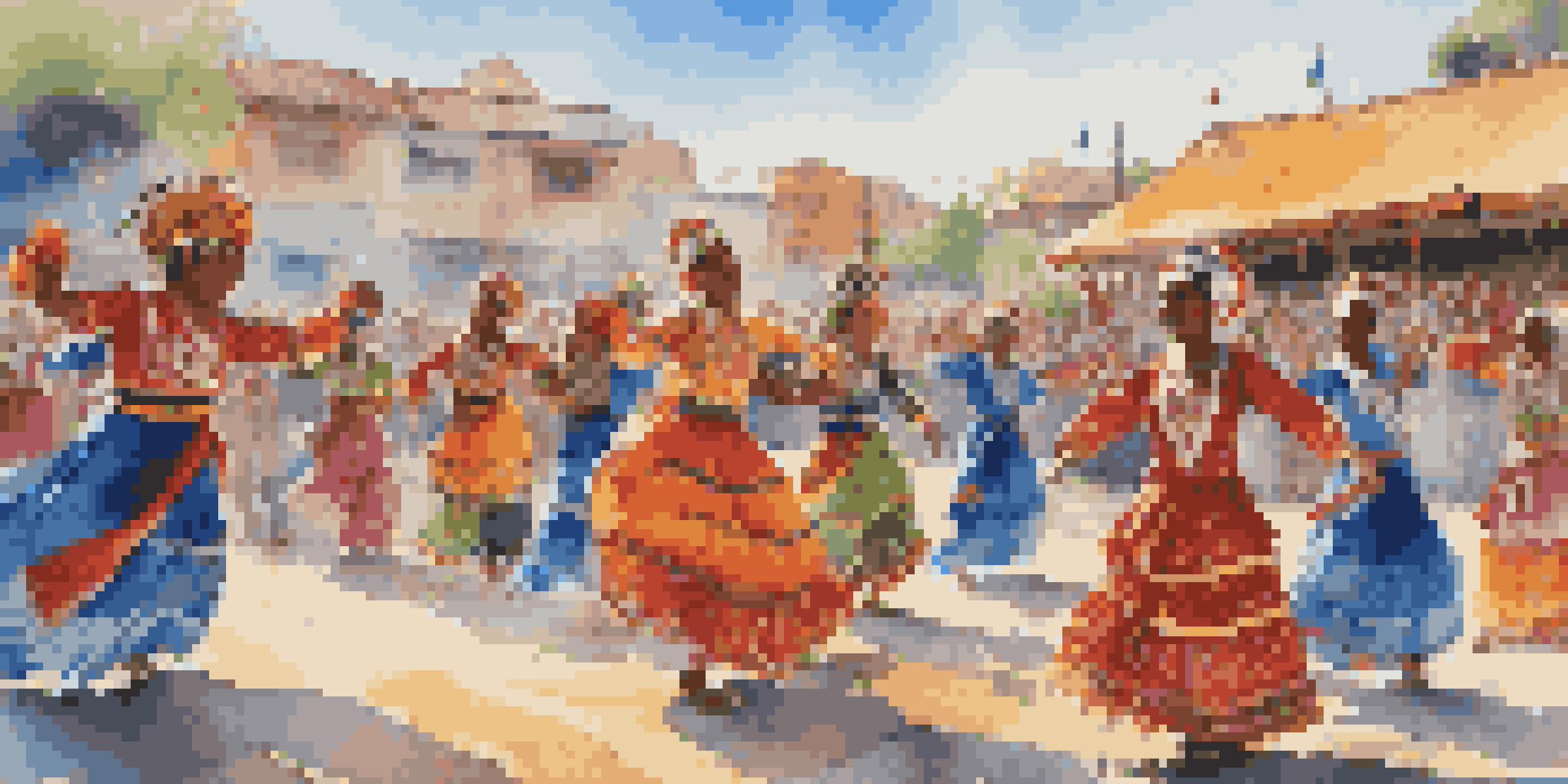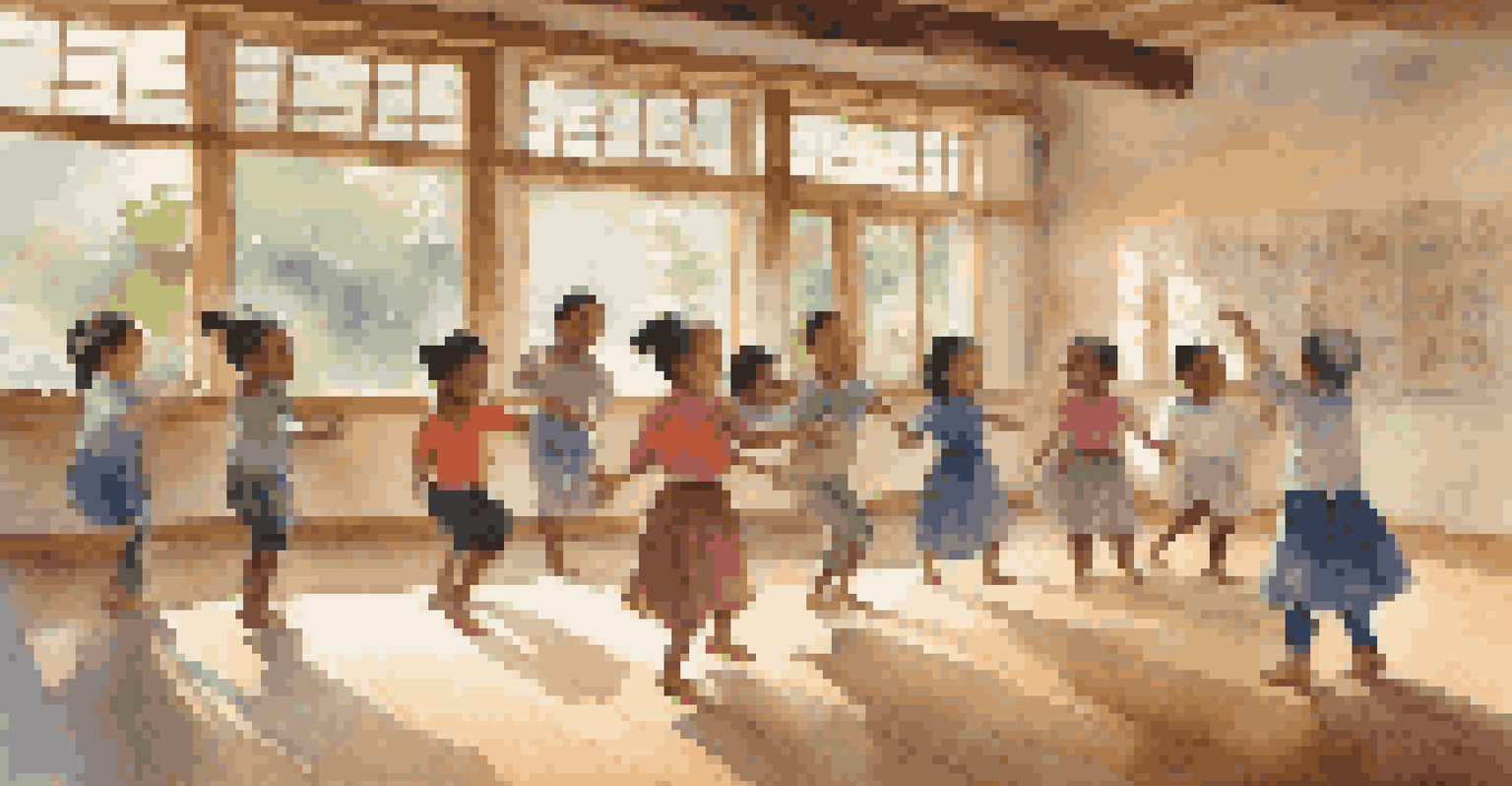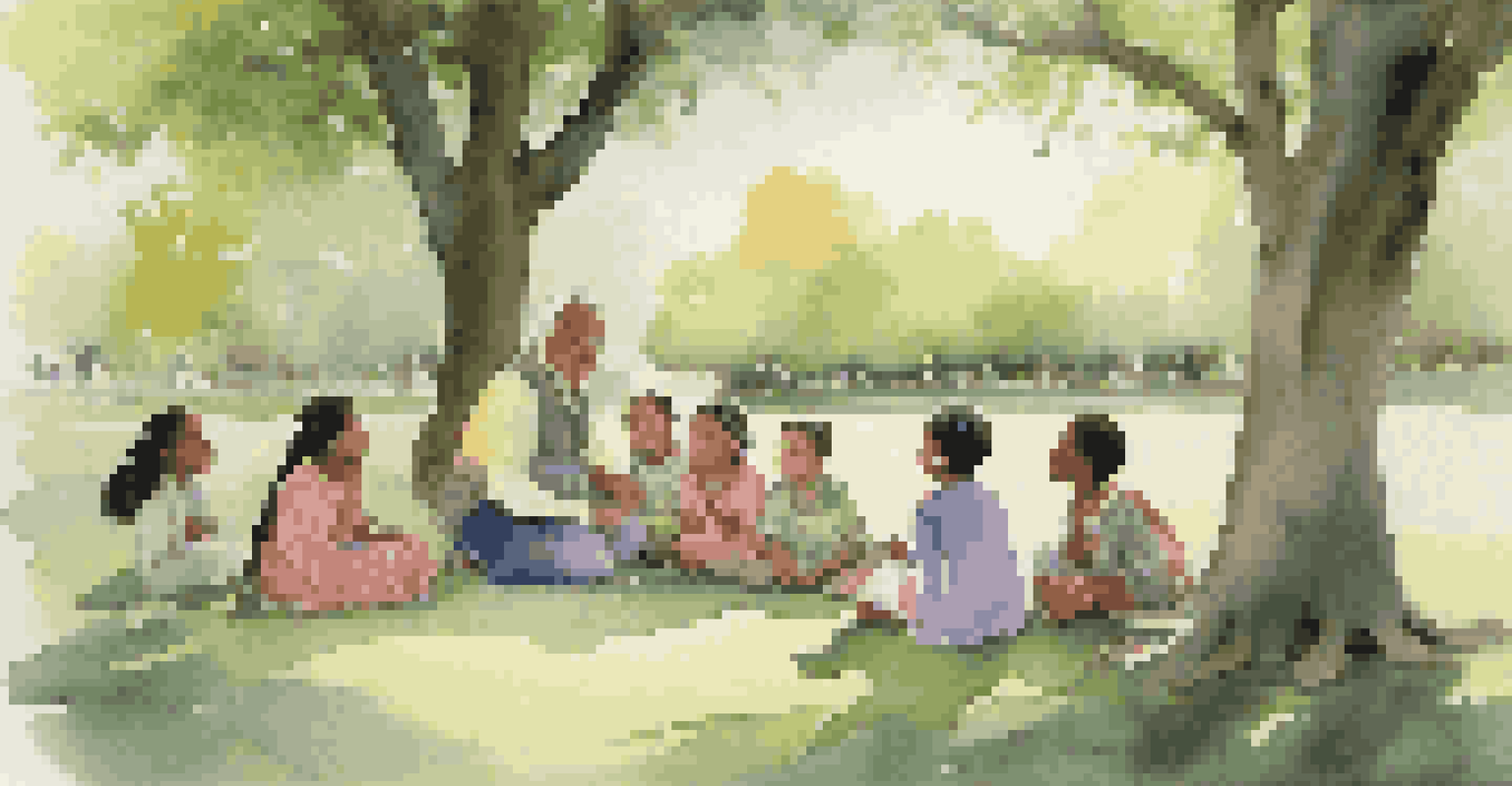Preserving Cultural Heritage Through Dance and Folklore

The Importance of Cultural Heritage in Modern Society
Cultural heritage serves as a bridge connecting us to our past, offering insights into our identities and values. In a rapidly globalizing world, preserving this heritage is crucial for fostering a sense of belonging and community. Dance and folklore play a pivotal role in this preservation, acting as living expressions of our history and traditions.
Cultural heritage is the legacy of physical artifacts and intangible attributes of a group or society that are inherited from past generations, maintained in the present and bestowed for the benefit of future generations.
For many communities, traditional dances are more than just performances; they are a way to tell stories and pass down knowledge through generations. Each movement and rhythm can encapsulate centuries of history, reflecting the experiences, struggles, and celebrations of a people. Thus, engaging with these art forms allows us to keep our cultural narratives alive.
Moreover, these practices contribute to cultural diversity, enriching the global tapestry of human expression. By celebrating our unique heritages, we create a more inclusive world where different voices are heard and valued. This diversity enhances our collective experience, encouraging understanding and appreciation among cultures.
Dance as a Medium of Cultural Expression
Dance is a dynamic form of cultural expression that transcends language barriers. Through movement, dancers convey emotions, tell stories, and celebrate life events, making it a powerful medium for cultural transmission. Whether it’s a ceremonial dance or a folk performance, each style carries its own significance and meaning.

Take, for instance, traditional dances like the Irish jig or the Indian Bharatanatyam; each is steeped in history and reflects the cultural nuances of its origin. These dances not only entertain but also educate audiences about the values and traditions of the communities they represent. This aspect of dance fosters a sense of pride and continuity among practitioners and spectators alike.
Cultural Heritage Connects Us
Cultural heritage serves as a vital link to our past, fostering a sense of belonging and community through traditions like dance and folklore.
Furthermore, as communities adapt to modern influences, dance evolves while still retaining its core cultural elements. This blend of tradition and innovation allows for a vibrant cultural dialogue, ensuring that heritage remains relevant and engaging for younger generations. In this way, dance becomes a living archive that evolves yet remains rooted in its origins.
Folklore: The Storyteller of Cultures
Folklore encompasses the stories, myths, and legends that shape the identity of a culture. These narratives, passed down orally or through written forms, carry valuable lessons and insights into the beliefs and practices of a community. By sharing these tales, cultures preserve their unique perspectives and wisdom for future generations.
Dance is the hidden language of the soul.
Consider how fairy tales from different cultures reflect societal values and moral lessons. From the Brothers Grimm to African oral traditions, each story provides a glimpse into the cultural fabric of its time. These stories often teach important life lessons, embodying the collective wisdom of a people and reinforcing shared values.
Additionally, folklore can adapt over time, incorporating contemporary issues while still honoring its roots. This adaptability ensures that the stories remain relevant, fostering a connection between the past and present. Through folklore, we not only entertain but also educate and inspire, keeping cultural heritage vibrant and alive.
The Role of Festivals in Cultural Preservation
Cultural festivals serve as vibrant platforms where dance and folklore come together to celebrate heritage. These events bring communities together, allowing individuals to showcase their traditions in a festive atmosphere. Festivals not only honor the past but also encourage participation from all age groups, especially the younger generation.
During festivals, traditional dances and folklore performances often take center stage, captivating audiences and fostering a sense of pride. As families gather to celebrate, they pass down stories and practices, ensuring that these cultural elements remain ingrained in community life. It’s a beautiful cycle of learning and sharing that strengthens cultural bonds.
Dance and Folklore Educate Generations
Traditional dances and folklore not only entertain but also educate audiences about cultural values, ensuring knowledge is passed down through generations.
Moreover, festivals attract visitors from outside the community, promoting cultural exchange and understanding. This exposure creates opportunities for dialogue and appreciation, helping to preserve traditions in a broader context. Ultimately, festivals embody the spirit of cultural heritage, making history accessible and engaging for everyone.
Education and Dance: Teaching Through Movement
Incorporating dance and folklore into educational settings can enhance cultural awareness among students. Schools that embrace these art forms provide a unique opportunity for children to connect with their heritage in a hands-on manner. This experiential learning deepens their understanding of cultural narratives and promotes respect for diversity.
Through dance classes and folklore storytelling sessions, educators can create an engaging curriculum that fosters creativity and collaboration. Students learn not just the steps or stories but also the historical context behind them. This knowledge empowers them to appreciate their own culture and the cultures of their peers.
Furthermore, such educational programs can help counteract cultural homogenization by instilling a sense of pride in one’s heritage. As students explore various dances and folklore from around the world, they develop a greater understanding of global interconnectedness. Ultimately, this education nurtures a generation that values and champions cultural diversity.
Community Involvement in Heritage Preservation
Community involvement is vital for the preservation of cultural heritage through dance and folklore. Local groups and organizations often spearhead initiatives that encourage participation in traditional practices, ensuring that these art forms remain vibrant. This grassroots involvement fosters a sense of ownership and pride within the community.
By organizing workshops, performances, and storytelling sessions, community members can engage directly with their heritage. These activities not only revive interest in traditional dance and folklore but also create intergenerational connections. Older generations pass down their knowledge to the youth, ensuring that skills and stories do not fade away.
Festivals Celebrate Cultural Diversity
Cultural festivals provide a vibrant platform for showcasing heritage, promoting community engagement, and encouraging cultural exchange.
Additionally, community involvement can lead to collaborations with cultural institutions, further amplifying efforts to preserve heritage. Partnerships with local schools, museums, and art organizations can create broader platforms for showcasing these traditions. In this way, everyone plays a role in safeguarding cultural heritage, creating a lasting impact.
The Future of Cultural Heritage: Embracing Change
As we look to the future, it’s essential to embrace change while preserving cultural heritage through dance and folklore. Modern influences can enrich traditional practices, allowing for innovation without losing sight of their roots. This balance is crucial for ensuring that heritage remains relevant in an ever-evolving world.
New technologies, such as social media and online platforms, provide unique opportunities for showcasing dance and folklore to a global audience. These tools can help connect individuals with their cultural heritage, even if they’re far from home. The digital age opens doors for creative expression, allowing traditions to be shared and celebrated on a larger scale.

Ultimately, the future of cultural heritage lies in collaboration and adaptability. By working together, communities can find new ways to honor their traditions while inviting others to join in the celebration. This inclusive approach ensures that cultural heritage continues to thrive, enriching our shared human experience for generations to come.